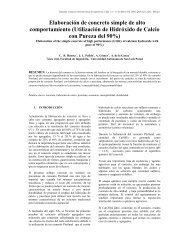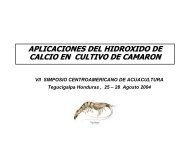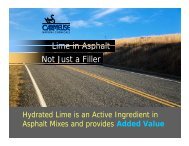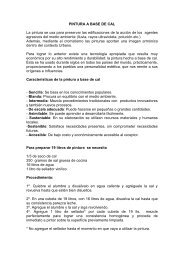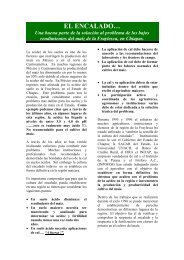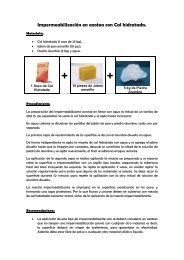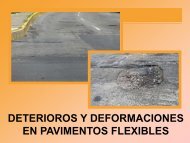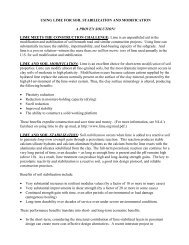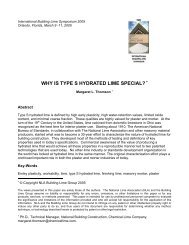Land Contamination: Technical Guidance on Special Sites: Acid Tar ...
Land Contamination: Technical Guidance on Special Sites: Acid Tar ...
Land Contamination: Technical Guidance on Special Sites: Acid Tar ...
You also want an ePaper? Increase the reach of your titles
YUMPU automatically turns print PDFs into web optimized ePapers that Google loves.
vegetati<strong>on</strong>, black or dark brown staining and, of course, any sign of oozing tars. A rangingrod or similar implement may allow the ground to be probed for evidence of soft ground andtars. As this is withdrawn, any free liquids/tarry deposits remaining <strong>on</strong> the end may be testedfor pH using appropriate pH papers or detectors.4.3.2 Site investigati<strong>on</strong>Approach to Site Investigati<strong>on</strong>sIn relati<strong>on</strong> to acid tar lago<strong>on</strong>s, the following issues are of particular relevance when planning aninvestigati<strong>on</strong> strategy:• likelihood of c<strong>on</strong>taminant migrati<strong>on</strong> away from the lago<strong>on</strong>s (e.g. into groundwater andsurrounding soil);• many sites will have few records of the compositi<strong>on</strong> or extent of lago<strong>on</strong>s, due to theirage, which can be in excess of 100 years. In such cases, aerial photographs can be ofparticular benefit in determining their extent and locati<strong>on</strong>, as can local residents andformer employees of the producing works. In some cases, satellite images may beavailable that reveal impacts <strong>on</strong> vegetati<strong>on</strong> (usually requiring specialist interpretati<strong>on</strong>);• geophysical techniques may be useful in delineating both the extent of lago<strong>on</strong>s andalso the nature and thickness of the capping layer;• an investigati<strong>on</strong> will need to take into account the presence of features that couldallow migrati<strong>on</strong> of tars away from the lago<strong>on</strong> e.g. old mine workings, c<strong>on</strong>duits,drainage channels, soluti<strong>on</strong> features etc; and• key pieces of informati<strong>on</strong> relevant to planning the study include the type of refiningoperati<strong>on</strong> likely to have given rise to the waste, the period of filling, the origin andidentity of fill materials (including any wastes) and any treatment that has been carriedout.A phased approach to site investigati<strong>on</strong> in which exploratory sampling is followed by a moredetailed study is appropriate for acid tar lago<strong>on</strong>s. However, exploratory sampling may not beneeded in all cases (e.g. where the existence of a lago<strong>on</strong> is obvious). In designing thesampling density and locati<strong>on</strong>s, it may be possible to restrict the number of samples <strong>on</strong> thegrounds that it is known that the material is homogenous.Some acid tar lago<strong>on</strong>s are quite heterogeneous. For example, investigati<strong>on</strong> of an acid tar pitin Derbyshire found that “fill products ranged from materials involved in the process ofreprocessing used oils (tar product, fullers earth and free flowing lubricating oils) to foundrysand, mining spoil and household refuse.”, (Nesbit et al 1995). In this case, during remedialstages, it may be practical to segregate and deal with the different wastes separately and thusgreater quantificati<strong>on</strong> via a more intensive sampling regime may be warranted. Where thereare <strong>on</strong>ly discrete pockets of n<strong>on</strong>-acid tar wastes all of the wastes are likely, in practice, to betreated as special waste and the variability within the lago<strong>on</strong> need not be quantified to thesame degree.R&D <str<strong>on</strong>g>Technical</str<strong>on</strong>g> Report P5-042/TR/04 22



